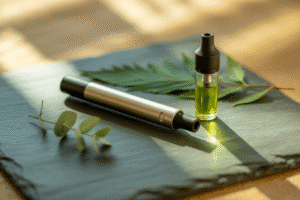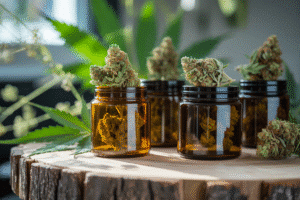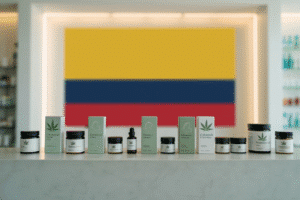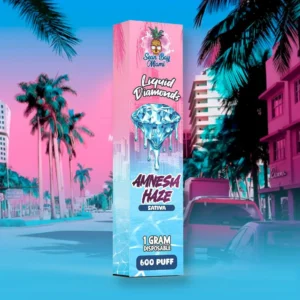- Follow the Money
The Dark Side of Prohibition: Illicit Operations and Crime
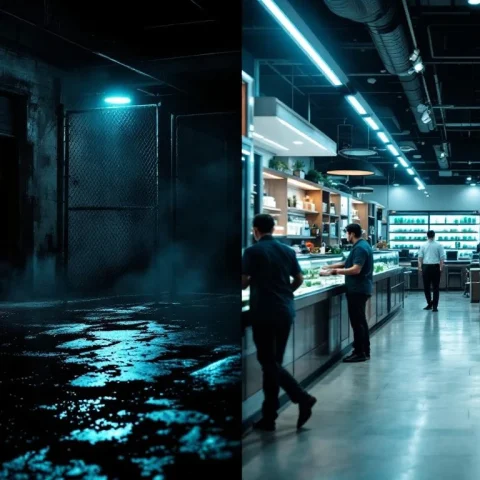
Contents
Contents
While governments worldwide debate cannabis legalization, a shadowy underworld thrives in the darkness of prohibition—one that fuels international crime syndicates, endangers communities, and generates billions in untaxed revenue for organized criminals. From Chinese-linked illegal grows in the UK to massive drug seizures at the Mexican border, the cost of prohibition extends far beyond simple law enforcement.
The uncomfortable truth? Prohibition doesn’t eliminate cannabis—it simply hands the entire industry to criminals who operate without safety standards, environmental protections, or accountability. Let’s examine the real consequences of keeping cannabis in the shadows and why legal regulation is the only path forward for public safety.
🌍 The Global Criminal Cannabis Empire
The illegal cannabis market represents one of the world’s largest criminal enterprises, generating an estimated $150 billion annually in black market revenue according to the United Nations Office on Drugs and Crime (UNODC). This massive underground economy operates entirely outside the law, funding everything from human trafficking to international terrorism. When legitimate businesses can’t serve cannabis consumers, organized crime fills the void—with devastating consequences.
📊 Black Market Cannabis Statistics
- ✓ $150 billion – Estimated annual global illegal cannabis market value
- ✓ 269 million – People worldwide who used cannabis in 2021 (UNODC)
- ✓ 82% – Percentage of US cannabis market still operated illegally in prohibition states
- ✓ 10,000+ – Illegal grow operations discovered annually in the UK alone
- ✓ $0 – Tax revenue generated from black market sales
Unlike alcohol prohibition in the 1920s, which lasted 13 years before being repealed due to rampant criminality, cannabis prohibition has persisted for over 80 years—creating generational criminal enterprises with international reach and sophisticated operations that rival legitimate corporations in scale and efficiency.
💡 Historical Parallel: Alcohol Prohibition
During US alcohol prohibition (1920-1933), organized crime flourished as groups like Al Capone’s syndicate generated $100 million annually ($1.7 billion in 2025 dollars). Violent crime surged, with the murder rate increasing 78% during prohibition. Within a year of repeal, murder rates dropped 25% and continued declining as legitimate businesses replaced criminal operations.
🏭 Chinese-Linked Illegal Grows: The New Face of Organized Crime
One of prohibition’s most troubling consequences emerged in the 2010s: large-scale cannabis operations linked to international criminal networks, particularly from China and Vietnam. These sophisticated operations have transformed the illegal cannabis landscape in Europe and North America, operating with industrial efficiency while exploiting vulnerable people and devastating local communities.
Major International Cannabis Busts (2023-2025)
| Location | Value | Connection |
|---|---|---|
| UK (West Midlands) | £130 million worth of plants | Chinese organized crime network |
| California | $1 billion+ annual illegal grows | Transnational cartels |
| Mexico Border | 3,590 pounds seized (single bust) | Cartel operations |
| Spain (Andalusia) | €42 million worth | International trafficking network |
These operations typically involve human trafficking victims forced to tend illegal grows in residential homes, warehouses, and rural properties. Workers—often trafficked from Southeast Asia—live in slavery-like conditions, with their passports confiscated and debts used to keep them captive. The grows themselves pose severe risks: jerry-rigged electrical systems cause house fires, chemical runoff contaminates neighborhoods, and armed guards protect the operations.
🚨 The Mexico Border: Cannabis Prohibition’s Frontline
📅 Recent Major Cannabis Seizures at US-Mexico Border
- January 2025: 3,590 pounds seized in El Paso, TX – hidden in false vehicle compartments. Estimated value: $7.2 million
- November 2024: 2,800 pounds discovered at Laredo checkpoint – largest single seizure of the year
- August 2024: $12 million worth intercepted at San Diego border crossing in commercial truck
- June 2024: 4,100 pounds found at Nogales, AZ – concealed in produce shipment
Despite cannabis legalization in many US states, the US-Mexico border remains a hotspot for cannabis trafficking. Why? Because prohibition states create profitable illegal markets where cartels can charge premium prices. Mexican cartels, historically focused on cocaine and heroin, now generate 25-30% of their revenue from cannabis—funding violence that has killed over 100,000 people in Mexico’s drug war over the past decade.
Paradoxically, US states with legal cannabis see dramatically reduced border smuggling. Colorado legalization correlated with a 70% drop in cannabis seizures at nearby border checkpoints. When consumers can buy legally, cartels lose their customer base.
🌲 Environmental Warfare: Illegal Grows vs. Nature
Illegal cannabis cultivation wreaks environmental havoc that legal grows could never match. Operating in remote forests and public lands, criminal grows poison ecosystems with banned pesticides, divert streams and rivers (destroying fish habitat), clear-cut pristine forests, and leave behind tons of toxic waste including fertilizers, irrigation tubing, and camping debris.
📊 Environmental Impact of Illegal Cannabis Grows
- • Water theft: A single illegal grow can divert 500,000+ gallons of water during growing season, devastating streams
- • Toxic pesticides: Banned chemicals like carbofuran kill wildlife – 85% of fishers (weasel-like animals) in California’s Sierra Nevada test positive for rodenticide poisoning
- • Deforestation: Illegal growers clear-cut thousands of acres of old-growth forest annually in California alone
- • Wildlife deaths: Pesticides kill not just target pests but owls, foxes, bears, and endangered species
Legal cannabis farms, by contrast, face strict environmental regulations: water use limits, banned pesticide lists, waste disposal requirements, and oversight. The difference is stark—legal grows operate sustainably while illegal operations destroy ecosystems with impunity.
⚖️ Prohibition vs. Legal Regulation: A Clear Choice
The contrast between prohibition and legal regulation couldn’t be more dramatic. Every aspect of the cannabis market improves under legal frameworks—from public safety to tax revenue, environmental protection to product quality.
❌ Cannabis Prohibition Creates:
- • International criminal networks
- • Human trafficking for grow operations
- • Zero tax revenue ($150B lost annually)
- • Environmental devastation
- • Untested, potentially contaminated products
- • Violent cartel activity at borders
- • Mass incarceration for non-violent offenses
- • No consumer protections
✅ Legal Regulation Delivers:
- • Licensed, regulated businesses
- • Legitimate jobs with labor protections
- • Billions in tax revenue for schools/healthcare
- • Environmental compliance requirements
- • Lab-tested products with quality standards
- • Reduced cartel revenue and violence
- • Criminal justice resources for serious crimes
- • Age verification and purchase limits
💰 Follow the Money: How Prohibition Funds Crime
Cannabis prohibition doesn’t just fail to stop consumption—it creates a massive revenue stream for the world’s most dangerous criminal organizations. The $150 billion global illegal cannabis market dwarfs the GDP of many countries, with profits funding everything from terrorist groups to international arms dealers.
Where Black Market Cannabis Profits Go
- Mexican Cartels: Use cannabis profits to fund fentanyl production, weapons purchases, and territorial wars that have killed over 100,000 people since 2015
- Human Trafficking Networks: Force victims to work illegal grows, generating profits that fund broader trafficking operations
- Money Laundering: Cannabis cash flows through international money laundering networks, enabling other criminal enterprises
- Corruption: Black market profits corrupt law enforcement, judges, and politicians in prohibition countries
Compare this to legal markets: Colorado has generated $2 billion in cannabis tax revenue since 2014, funding schools, drug treatment programs, and infrastructure. California’s legal market created 75,000 jobs as detailed in our industry growth analysis. These are dollars and jobs that would otherwise flow to criminal organizations.
🏥 Public Health: Why Regulation Beats Prohibition
Prohibition advocates claim they’re protecting public health, but evidence shows the opposite. Black market cannabis can contain dangerous pesticides, mold, heavy metals, and even fentanyl contamination. No lab testing, no quality control, no safety standards—just whatever dealers provide.
⚠️ Black Market Cannabis Health Risks
Unregulated cannabis products have been found contaminated with: banned pesticides (carbofuran, aldicarb), heavy metals (lead, arsenic), dangerous molds (aspergillus), and even fentanyl. In 2019, the “EVALI” outbreak killed 68 people who vaped black market THC cartridges containing vitamin E acetate. Legal state-tested products had ZERO cases. Prohibition doesn’t protect consumers—regulation does.
Legal cannabis markets require extensive testing: potency verification for medical safety, pesticide screening, microbial testing, heavy metals analysis, and residual solvent testing. Products failing these tests can’t be sold. This protects consumers in ways prohibition never could.
✨ Real-World Results: What Legalization Achieves
We don’t need to speculate about legalization’s effects—we have extensive data from jurisdictions that ended prohibition. The results consistently show reduced crime, increased tax revenue, and better public health outcomes.
📈 Proven Benefits of Cannabis Legalization
- • Crime Reduction: Border states saw 12-25% drops in violent crime after legalization
- • Cartel Revenue: Mexican cannabis smuggling dropped 70% after US state legalizations
- • Tax Revenue: US legal states generated $15.5 billion in cannabis taxes (2014-2024)
- • Job Creation: Legal cannabis industry employs 440,000 Americans (2025)
- • Criminal Justice: Arrest rates for cannabis possession dropped 90%+ in legal states, freeing police for serious crimes
🗺️ The Path Forward: Policy Solutions That Work
Ending prohibition doesn’t mean unregulated chaos—it means smart regulation that protects consumers, generates tax revenue, and eliminates criminal markets. Here’s what effective cannabis legalization looks like:
- Licensing and Oversight: Require businesses to obtain licenses, pass background checks, and submit to regular inspections—just like alcohol and tobacco
- Quality Testing: Mandate third-party lab testing for potency, contaminants, pesticides, and microbes before products reach consumers
- Environmental Standards: Require water conservation, banned pesticide compliance, and proper waste disposal to prevent environmental damage
- Tax and Revenue: Implement reasonable taxes (15-25%) that discourage black markets while funding education and public health
- Social Equity: Ensure legalization includes provisions for communities harmed by prohibition—expungement, business loans, job training
Countries and states implementing these frameworks see dramatic reductions in illegal grows, criminal activity, and cartel influence. Research from Cato Institute demonstrates clear benefits. The evidence is clear: regulation works.
🌍 A Global Movement: The Tide Turns Against Prohibition
The international momentum toward legalization is accelerating. As countries observe the successes in North America and Europe, more are reconsidering prohibition’s failures and embracing evidence-based regulation.
🌐 Global Legalization Milestones
- Germany (2024): Europe’s largest economy legalized adult-use cannabis, setting precedent for EU neighbors
- Thailand (2022): First Asian nation to legalize, demonstrating prohibition isn’t culturally inevitable
- Malta (2021): First EU nation to fully legalize home growing and possession
- Mexico (Pending): Supreme Court mandated legalization, implementation ongoing
- United States: 24 states plus DC legalized, federal rescheduling underway
The Choice Is Clear
Cannabis prohibition has failed spectacularly. After 80+ years, we’ve created a $150 billion criminal enterprise that funds international cartels, devastates environments, exploits trafficked workers, and provides zero consumer protection. Meanwhile, jurisdictions that ended prohibition see reduced crime, increased tax revenue, safer products, and elimination of illegal grows.
The dark side of prohibition isn’t theoretical—it’s Chinese-linked illegal grows in UK suburbs, Mexican cartel violence fueled by cannabis profits, poisoned ecosystems in California forests, and contaminated products killing consumers. These are prohibition’s direct consequences.
Legal regulation isn’t perfect, but it’s dramatically better than prohibition on every metric that matters: public safety, tax revenue, environmental protection, criminal justice, and consumer health. The question isn’t whether prohibition works—it demonstrably doesn’t. The question is how long we’ll keep funding criminal organizations while pretending we’re protecting society.
As more jurisdictions embrace evidence-based cannabis policy, prohibition’s days are numbered. The only question is how much damage it will cause before it finally ends. For communities suffering under prohibition’s consequences—whether from cartel violence, environmental devastation, or mass incarceration—that day can’t come soon enough.
📝 Legal Disclaimer
This article discusses cannabis prohibition and legal regulation from a policy and public safety perspective. It is not legal advice and does not advocate for breaking laws. Cannabis remains illegal in many jurisdictions. Always comply with local laws and regulations. The views expressed are for educational purposes regarding the societal impacts of prohibition versus legal regulation frameworks.
Learn More About Cannabis Policy and Responsible Use
Understanding cannabis policy helps us advocate for evidence-based approaches that prioritize public safety over failed prohibition. If you’re in a legal jurisdiction, choose licensed retailers that provide lab-tested, regulated products.
Explore our related content: Federal Rescheduling and Legalization Guide | Cannabis vs Alcohol: Health Comparisons | Cannabis Industry Market Trends

